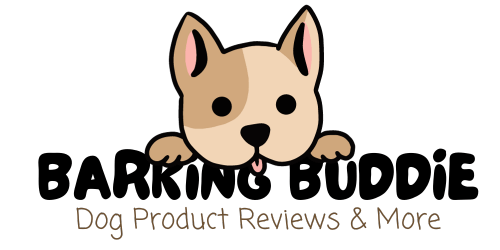If you’re a dog owner, you’ve probably experienced the frustration of coming home to find your favorite shoes in pieces or your furniture gnawed on. Dealing with destructive chewing behavior in dogs can be a challenge, but fear not! In this article, we will explore effective methods to prevent and address this common issue. With some patience, understanding, and a few preventive measures, you’ll be well on your way to a harmonious coexistence with your furry friend.

Understanding Destructive Chewing in Dogs
What is destructive chewing?
Destructive chewing refers to the behavior of dogs chewing on items that they are not supposed to, resulting in damage to the objects and potentially posing a danger to their own health. This behavior is often seen in puppies, but it can also occur in adult dogs. Understanding why dogs engage in destructive chewing is crucial in preventing and addressing this issue.
Causes of destructive chewing
There are various causes of destructive chewing in dogs. Puppies may chew on objects as a way of exploring their environment and relieving teething discomfort. Adult dogs may resort to chewing due to boredom, anxiety, or frustration. They may also chew out of habit or to assert dominance. It is essential to identify the underlying cause in order to effectively prevent or address destructive chewing behavior in dogs.

Preventing Destructive Chewing
Provide appropriate chew toys
One of the key steps in preventing destructive chewing is to provide your dog with appropriate chew toys. These toys should be made specifically for dogs and designed to withstand heavy chewing. Look for toys that are made from durable materials, such as rubber or nylon, and avoid ones that can easily be torn apart or swallowed. Providing a variety of toys can help keep your dog engaged and satisfied.
Supervise your dog
Supervision plays a crucial role in preventing destructive chewing behavior. Whenever possible, keep an eye on your dog to ensure they are not chewing on inappropriate items. This is especially important during the early stages of training or when your dog is still a puppy. If necessary, use baby gates or crate training to restrict access to certain areas of your home until your dog has learned appropriate chewing habits.
Create a safe environment
Another step in preventing destructive chewing is to create a safe environment for your dog. Make sure that all potential hazards, such as electrical cords, toxic plants, or easily accessible items, are kept out of reach. Block off or secure any areas where your dog may be tempted to chew on inappropriate objects. By removing temptations and making the environment safe, you can greatly reduce the likelihood of destructive chewing.
Establish a consistent routine
Establishing a consistent daily routine can also help prevent destructive chewing. Dogs thrive on routine and structure, so providing them with a predictable schedule can help alleviate anxiety and boredom. Make sure to incorporate regular exercise and mental stimulation into your dog’s routine, as a tired and mentally stimulated dog is less likely to engage in destructive behavior.

Addressing Destructive Chewing
Identify the triggers
When your dog engages in destructive chewing, it is important to identify the triggers that may be causing this behavior. Is your dog chewing when left alone? Is it happening when they are bored or anxious? Understanding the triggers can help you address the root cause of the behavior and develop an effective plan of action.
Redirect the behavior
Once you have identified the triggers, it is crucial to redirect your dog’s behavior towards appropriate chewing alternatives. Whenever you catch your dog chewing on an inappropriate item, calmly and firmly say “no” and remove the item. Immediately offer a suitable chew toy and praise your dog when they engage with it. Consistency and positive reinforcement are essential in teaching your dog what is and isn’t acceptable to chew on.
Use deterrents
If redirecting the behavior alone is not effective, you may consider using deterrents to discourage destructive chewing. Bitter apple spray or other chew deterrent sprays can be applied to objects that your dog is prone to chewing on. The unpleasant taste or smell can deter your dog from chewing on those items. However, it is important to use these products as a temporary solution while addressing the underlying causes of the chewing behavior.
Training and behavior modification
In some cases, training and behavior modification techniques may be necessary to address destructive chewing in dogs. Consult with a professional dog trainer or behaviorist to develop a personalized training plan. They can help you identify any additional training needs and work with you to modify the behavior through positive reinforcement and other training methods.
Consult with a professional
If the destructive chewing behavior persists or if you are unable to address it on your own, it may be beneficial to seek professional help. A veterinarian or a certified dog behaviorist can provide guidance and support in managing and addressing the behavior. They can assess your dog’s unique situation and provide you with expert advice tailored to your dog’s specific needs.
In conclusion, understanding and preventing destructive chewing in dogs requires a combination of providing appropriate chew toys, supervising your dog, creating a safe environment, and establishing a consistent routine. Addressing the issue involves identifying triggers, redirecting the behavior, using deterrents if necessary, and seeking professional assistance when needed. With patience, consistent training, and a positive approach, destructive chewing behavior can be successfully prevented and addressed, leading to a happier and healthier dog-owner relationship.


